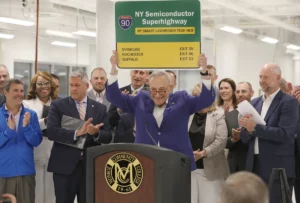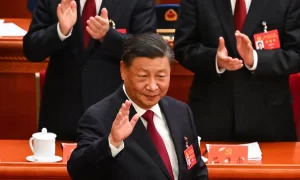Introduction:
The United States is facing a critical shortage of skilled workers in the semiconductor industry, hindering the growth of this vital sector. In response to this challenge, President Joe Biden’s administration has unveiled a comprehensive plan to invest over $5 billion in a public-private consortium, with the aim of supporting research and development in advanced computer chips.
The company will dedicate a significant portion of this investment to establish a “Workforce Center of Excellence” to address the pressing need for trained semiconductor engineers.
This blog post will delve into the details of the plan, its implications for the industry, and the potential impact on the broader economy.
Follow us on LinkedIn for everything around Semiconductors & AI
The Current Landscape:
The semiconductor industry in the United States has been grappling with a shortage of skilled workers, posing a significant obstacle to meeting the increasing demand for advanced computer chips.
However, the responsibility for workforce training has traditionally fallen on state and local governments and individual companies.
However, concerns have been raised that these efforts alone may not be sufficient. With immigration-based solutions unlikely due to the political climate, the focus has shifted to enhancing training programs for new workers.
Read More: What are the Various Types of Semiconductor Packaging
Regional Challenges and Industry Setbacks:
States like Arizona, poised to become a hub for the US chip sector, have already experienced labor issues affecting major semiconductor projects.
Moreover,Taiwan Semiconductor Manufacturing Company (TSMC) has encountered delays in the launch of its flagship fabrication plant in Phoenix, citing worker shortages as a primary reason.
Similarly, Intel’s $20 billion plant in Ohio is reportedly facing construction delays, influenced by a sluggish chip market and issues with government grant disbursement.
The Biden Administration’s Response:
In an effort to reverse the decades-long decline in the US semiconductor industry, President Biden’s administration has outlined a multifaceted plan.
However, the centerpiece of this plan is the National Semiconductor Technology Center (NSTC), a public-private consortium that will receive substantial funding for research and development in advanced computer chips.
A crucial component of the NSTC is the “Workforce Center of Excellence,” which will be strategically located in different regions across the US to stimulate the training of more semiconductor engineers.
Read More: What are 5 Techniques in Advanced Packaging?
The Workforce Plan in Detail:
The White House’s workforce plan, as outlined in a fact sheet, aims to launch new programs and leverage existing local efforts to scale up proven education and training initiatives.
The plan emphasizes supporting both manufacturing capacity and emerging research and development efforts within the semiconductor industry.
With the overarching goal of revitalizing the US semiconductor sector, the administration aims to counter the industry’s decline, which has seen its global market share shrink from nearly 40% in 1990 to less than 10% today.
Read More: Why TSMC Wants OSAT partners to Expand Advanced Packaging ?
The Broader Context:
The workforce plan is part of a larger legislative effort, the CHIPS and Science Act, signed into law in August 2022, allocating around $50 billion in grants to the semiconductor sector.
However, the funds are divided between manufacturers and chip research and design, with the recent announcement focusing on the latter.
As the semiconductor giants vie for a piece of this financial pie, the plan signals a commitment to nurturing domestic talent and innovation within the industry.
Conclusion:
President Biden’s $5 billion plan to address the workforce shortage in the US semiconductor industry is a crucial step towards revitalizing this vital sector.
By strategically investing in research and development and establishing a dedicated workforce training center, the administration aims to tackle the persistent challenges that have hindered the industry’s growth.
As the plan unfolds, its success will be closely monitored, and its impact on the broader landscape of technology, innovation, and the US economy will become clearer in the years to come.








